
The conservation status of a group of organisms indicates whether the group still exists and how likely the group is to become extinct in the near future. Many factors are taken into account when assessing conservation status: not simply the number of individuals remaining, but the overall increase or decrease in the population over time, breeding success rates, and known threats. Various systems of conservation status exist and are in use at international, multi-country, national and local levels as well as for consumer use.

Goldman's woodrat is a rodent species in the family Cricetidae. It is found only in Mexico throughout the Mexican Plateau, stretching from Southeast Chihuahua to South San Luis Potosi and North Queretaro. The plateau is an average 5,988 ft. above sea level and covers a land area of 232,388 sq. miles.
Ateleia gummifera is a species of flowering plant in the family Fabaceae. It is found only in Cuba.
Marlothiella gummifera is a species of flowering plant in the family Apiaceae, and the only species in the monotypic genus Marlothiella. It is endemic to Namibia, where its natural habitats are rocky areas and cold desert. It is also the only genus in the tribe Marlothielleae, of the subfamily Apioideae.

The giant scops owl, lesser eagle-owl or the Mindanao eagle-owl, is a species of owl in the family Strigidae. It is endemic to the Philippines. In size and structure, it is considered intermediate between a scops owl and an eagle-owl. Its natural habitat is tropical moist lowland forests. It is threatened by habitat loss.

The pale gray shrew is a species of mammal in the family Soricidae. It is endemic to Pakistan. It is threatened by habitat loss.

Pearson's long-clawed shrew is a species of mammal in the family Soricidae. It is monotypic within the genus Solisorex. It is endemic to Sri Lanka. Its natural habitats are subtropical or tropical dry forests and subtropical or tropical dry lowland grassland. It is threatened by habitat loss. It is known as ශ්රී ලංකා නියදිගු මා හික් මීයා in Sinhala.
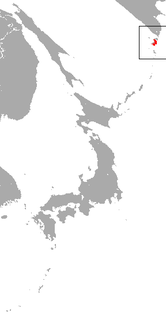
The Paramushir shrew is a species of mammal in the family Soricidae. It is endemic to Russia. Its natural habitat is temperate forests. It is threatened by habitat loss.

Day's shrew is a species of mammal in the family Soricidae. It is endemic to India. Its natural habitat is subtropical or tropical dry forests. It is threatened by habitat loss.
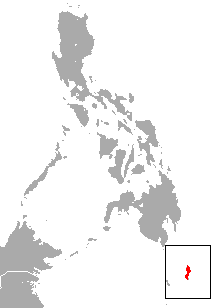
The Talaud flying fox or Talaud fruit bat is a species of bat in the family Pteropodidae. It is endemic to the islands of Salebabu and Karekaleng in the Talaud Archipelago of Indonesia. Its natural habitat is subtropical or tropical swamps.
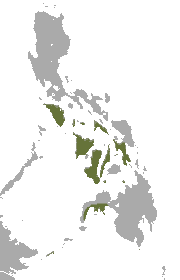
The little golden-mantled flying fox is a species of bat in the family Pteropodidae. It is found in Indonesia and the Philippines. Its natural habitat is subtropical or tropical dry forests. It is threatened by hunting and habitat loss, as well as pollution.
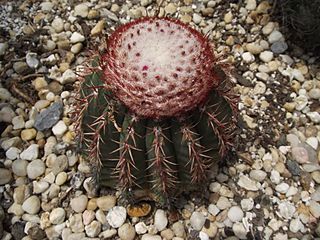
Melocactus conoideus is a species of plant in the family Cactaceae. It is endemic to Brazil. Its natural habitat is dry savanna. It is threatened by habitat loss.

Uebelmannia buiningii is a species of plant in the family Cactaceae. It is endemic to Brazil. Its natural habitat is dry savanna. It is threatened by habitat loss.

Uebelmannia pectinifera is a species of plant in the family Cactaceae. It is endemic to Brazil. Its natural habitats are dry savanna and rocky areas. It is threatened by habitat loss.
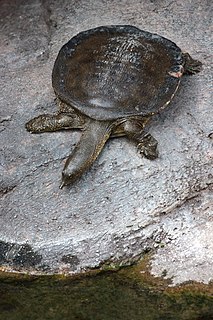
The African softshell turtle or Nile softshell turtle is a large species of turtle from fresh-water and brackish habitats in Africa and the Near East. It is the only extant species from the genus Trionyx, but in the past many other softshell turtles were placed in this genus; they have now been moved to various other genera. Despite the name "African softshell turtle", it is not the only species or genus of softshell turtle in Africa. It is a very large species of softshell turtle, with sizes that range from 85 to 94 cm, a weight of 40 kg, and an unconfirmed max size of 120 cm. They are omnivores in diet, consuming small fish, crustaceans, and also palm seeds and fallen leaves.

Anthene larydas, the spotted hairtail or common ciliate blue, is a butterfly in the family Lycaenidae. It is found in Senegal, the Gambia, Guinea-Bissau, Guinea, Burkina Faso, Liberia, Sierra Leone, Ivory Coast, Ghana, Nigeria, Cameroon, the Republic of the Congo, the Central African Republic, the Democratic Republic of the Congo, Uganda and western Kenya. The habitat consists of forests and Guinea savanna.
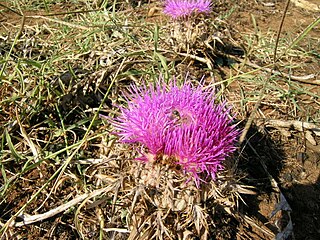
Chamaeleon gummifer, also known as distaff thistle or stemless atractylis, is a thistle in the Chamaeleon genus. Formerly, it was placed in the Atractylis genus. It is native to the Mediterranean basin, where it can be found in various habitats, including cultivated- or uncultivated fields and forests. It is a perennial herb producing a stemless, pinkish flower. The plant has a history of use in folk medicine, but it is very toxic due to the presence of atractyloside and carboxyatractyloside.
















